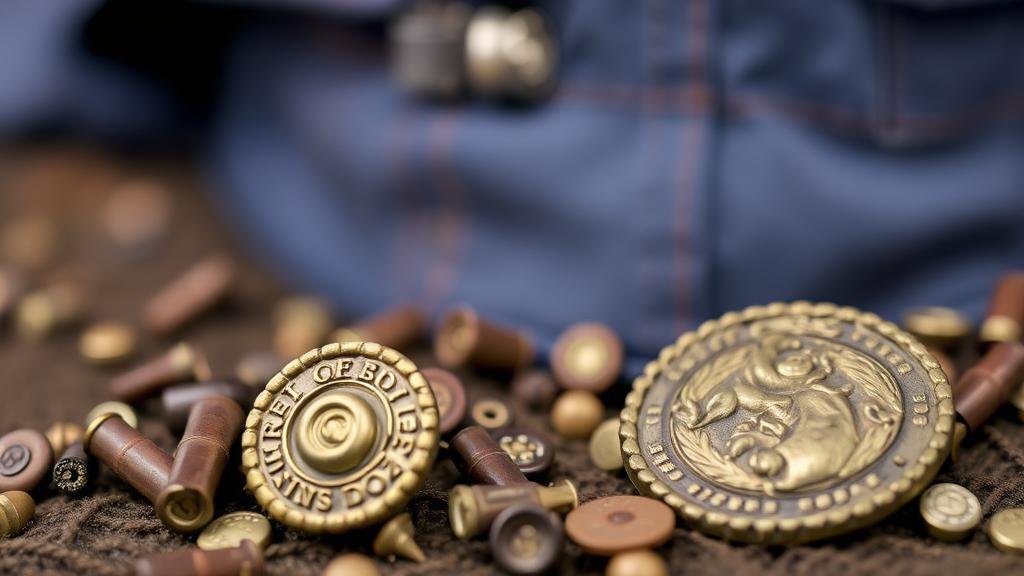Detecting for Civil War Artifacts: Tips for Finding Bullets, Buttons, and Buckles
Detecting for Civil War Artifacts: Tips for Finding Bullets, Buttons, and Buckles
The American Civil War, fought from 1861 to 1865, was one of the most significant events in U.S. history, and its remnants remain buried across the country. For hobbyists and historians alike, metal detecting for artifacts from this era can yield exciting finds, such as bullets, buttons, and buckles. This article delves into effective strategies for locating these treasures, the types of equipment to use, and essential considerations for responsible artifact recovery.
Understanding Civil War Artifacts
Artifacts from the Civil War can provide valuable insights into the daily lives of soldiers and the material culture of the time. The most common types of artifacts include:
- Bullets: Lead projectiles used in firearms, offering clues about the type of weaponry utilized.
- Buttons: Identifying military regimental buttons can tell stories of allegiance and unit organization.
- Buckles: Often tied to uniforms and equipment, buckles can indicate rank, branch of service, and specific regimental history.
Knowing what to look for and understanding their historical context enhances the excitement and significance of the hunt.
Choosing the Right Equipment
Successful artifact recovery starts with selecting the right metal detector. Consider the following when choosing equipment:
- Frequency: Look for detectors operating at lower frequencies (around 5-15 kHz) that are better for detecting lead and small iron objects.
- Ground Balancing: High-quality detectors allow users to adjust for soil mineralization, which can improve sensitivity in areas with high iron content.
- Water Resistance: If searching near rivers or in wet conditions, choose a detector that is waterproof or designed for wet environments.
Popular choices among hobbyists include the Garrett AT Pro, Minelab Equinox 800, and Fisher F75. Each of these models is well-regarded for their performance in various conditions.
Bibliography of Locations
Prior to heading out, research potential sites where Civil War activities took place. The following types of areas can be fruitful:
- Battlefields: Sites such as Gettysburg and Antietam are rich in artifacts but may require permissions and adherence to preservation laws.
- Campsites: Locations where soldiers camped tend to yield personal items, including buttons and buckles.
- Parks and Historical Sites: Many historic parks offer limited metal detecting opportunities under specific regulations.
Incorporating resources such as historical maps and archeological studies can help narrow down promising locations. Resources like the American Battlefield Trust and local historical societies provide valuable context and information.
Strategies for Searching
Effective searching strategies can make a significant difference in your success. Consider the following techniques:
- Grid Search: Systematically cover an area in a grid pattern for thoroughness, ensuring that you do not miss small items.
- Digging Techniques: Employ careful digging methods using hand trowels to minimize damage to artifacts and the surrounding earth.
- Signal Interpretation: Learn to interpret your detectors signals, as both shallow and deep targets can yield valuable artifacts.
Its essential to maintain a balance between excitement and patience, as finding valuable artifacts often requires time and persistence.
Legal and Ethical Considerations
Artifact recovery is not simply a matter of digging and collecting; there are legal and ethical considerations vital to preserving history. Before detecting, be aware of the following:
- Permits: Many states and localities require permits for metal detecting in designated areas.
- Reporting Finds: Any significant artifacts should be reported to local authorities or historical societies, particularly if they are of archaeological importance.
- Site Disturbance: Always restore the site to its original condition after digging to prevent environmental degradation.
Respecting the historical significance of your finds and the environment is crucial for future preservation efforts.
Conclusion: Putting It All Together
Detecting for Civil War artifacts provides a unique opportunity to connect with history and discover tangible links to the past. By selecting the right equipment, understanding artifact types and their context, employing effective search strategies, and adhering to legal and ethical standards, detectorists can enhance their chances of uncovering significant finds. Initiate your journey with proper planning, respect for history, and a willingness to learn, and you may uncover stories long buried beneath the earth.



